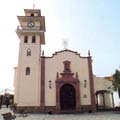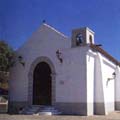History.
 This region was populated by the aborigines. Its name is intimately related to La Esperanza. The story goes that it owes its name to the hope with which the Spanish were able to escape from the battle of Acentejo. They glimpsed the camp set up at Añaza, from atop a mountain.
This region was populated by the aborigines. Its name is intimately related to La Esperanza. The story goes that it owes its name to the hope with which the Spanish were able to escape from the battle of Acentejo. They glimpsed the camp set up at Añaza, from atop a mountain.
Since it was peopled, there existed a modest temple consecrated to La Esperanza , which the Coronado family substituted for a new building halfway through the XVI century, dedicating it to San Juan Evangelista. The temple of Rosario is from the same time frame, it is a devotion centre to San Amaro (San Borondón).
This municipality has had a royal mayor since the XVI century, and obtained the municipality in 1813.
It is in 1929 when the present day churches of La Esperanza and El Rosario were built.
A distinctive characteristic is that it ceded a great part of its territory and population to the insular capital in the 70’s decade of the XX century.
 Places of Historical Interest
Places of Historical Interest
Historical Road: Plaza Llano del Moro – Las Toscales – Machado – Candelaria
Pirate House
Temple of Our Lady of Rosario
It has images of San Amaro and San José from the XVIII century, a canvas of the Christ of Humanity and Patience, a high altarpiece with the Virgin of El Rosario dating from the XVI century and a multicoloured sculpture of San Sebastian from the XVII century.
Church of Our Lady of La Esperanza
Colonial style, it was built on the grounds of the ancient temple from the XVI century.
It preserves the image of the Patroness from the XVII century, a baroque image of Our Lady of Los Dolores and a San Juan from the XVII century.